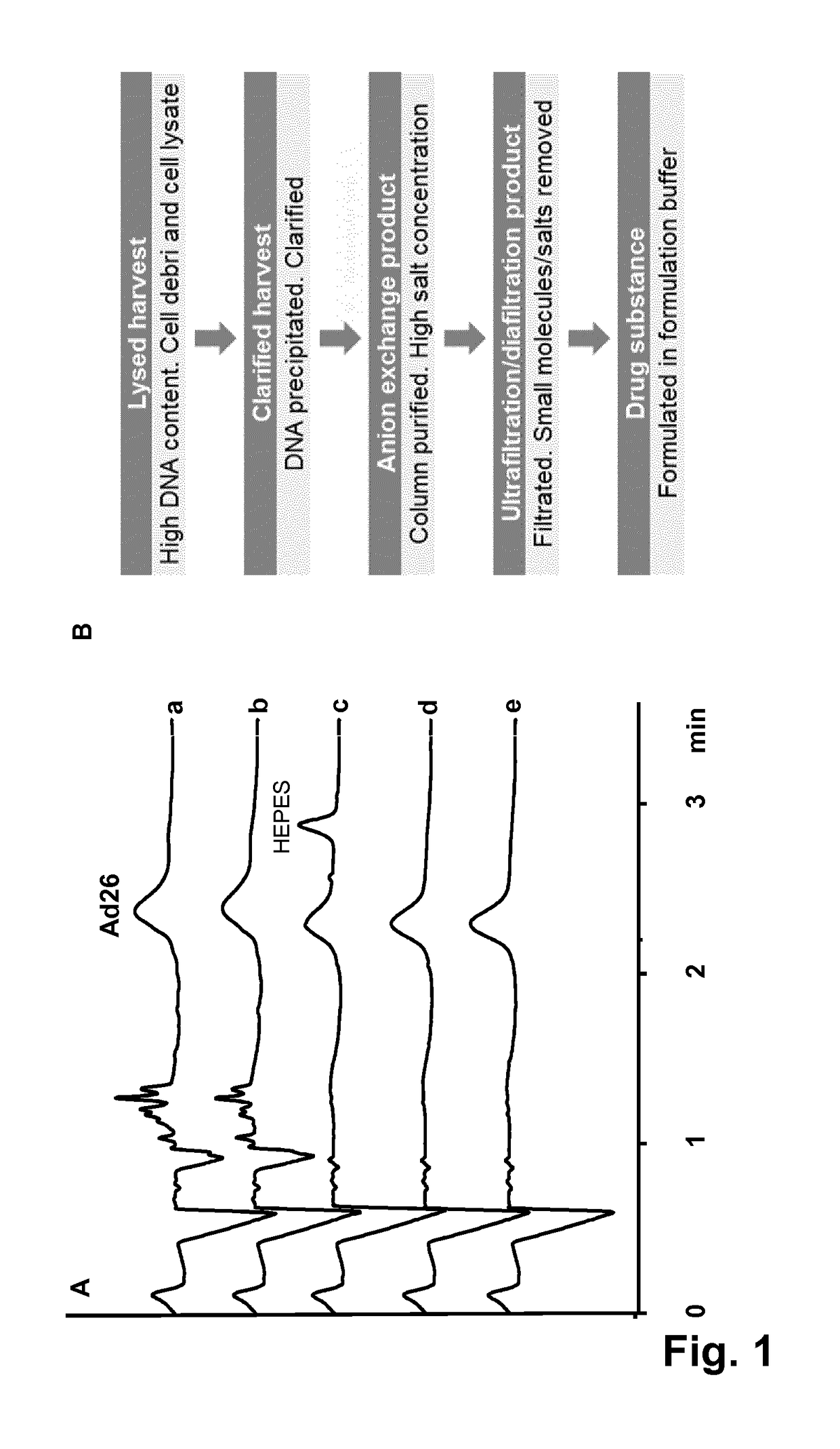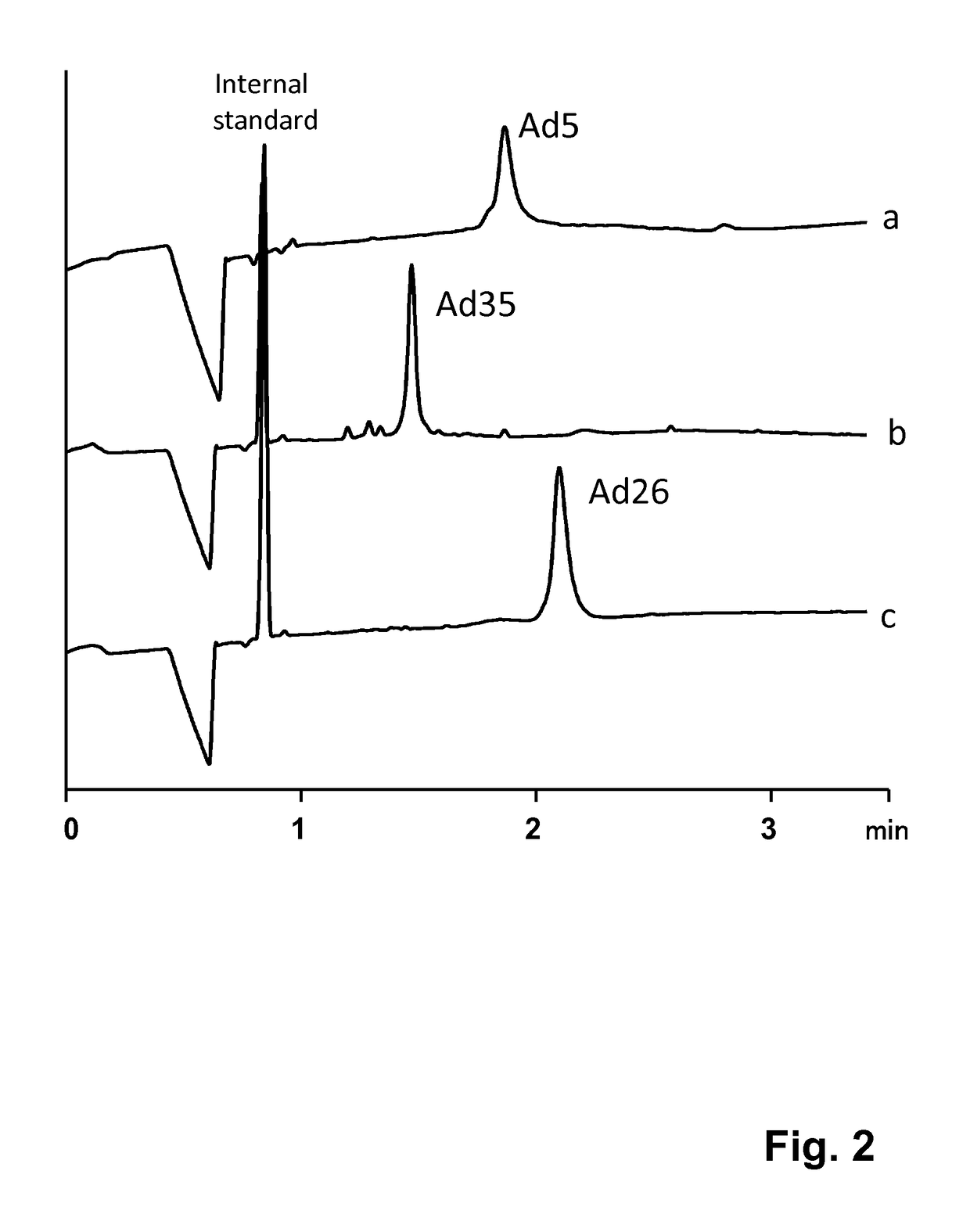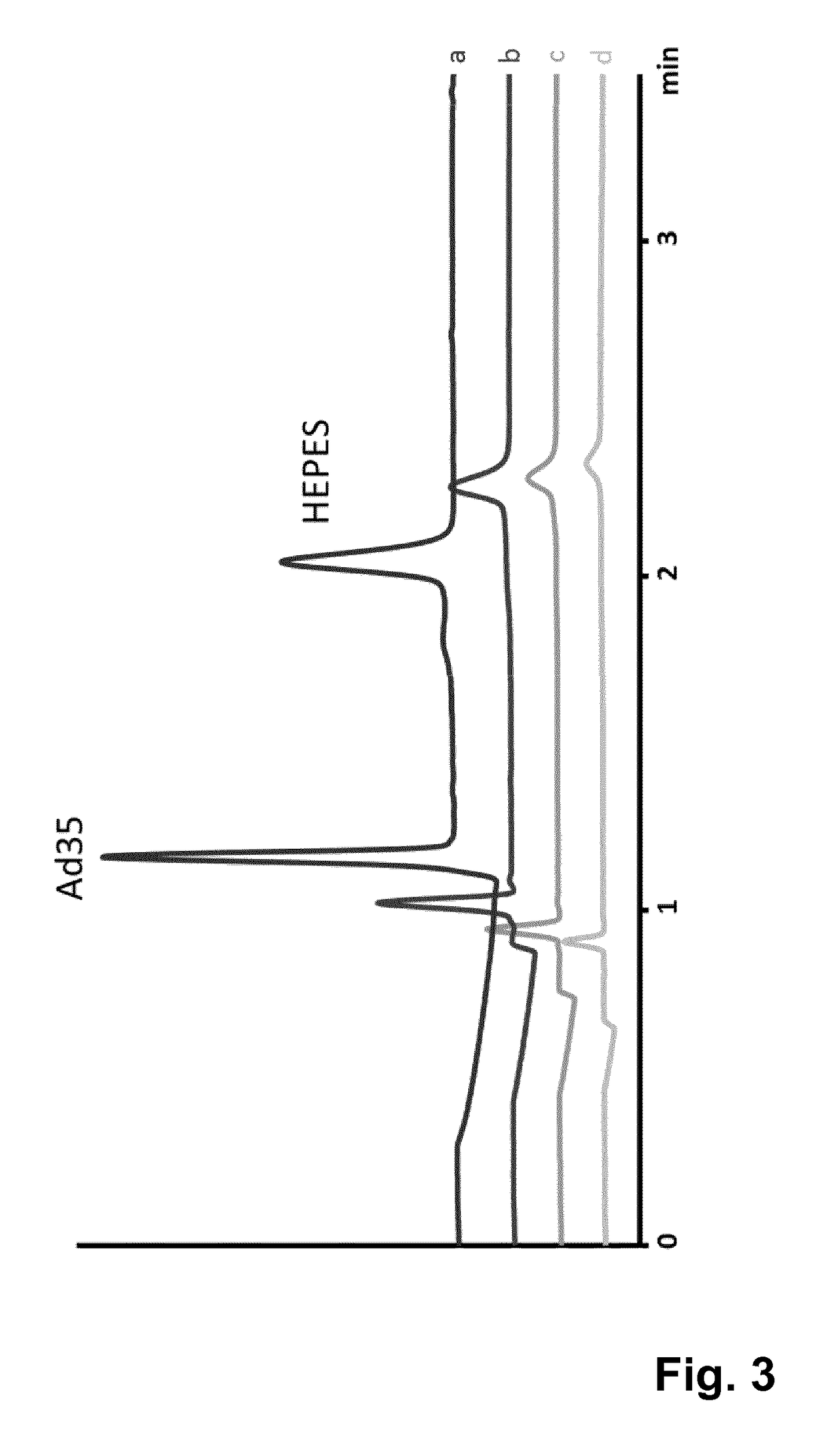Method for quantification of virus particles using capillary zone electrophoresis
a technology of capillary zone and quantification method, applied in the field of biological sample analysis, can solve the problems of inconvenient determination of adenovirus concentration, laborious technique, high cost of chemicals, etc., and achieve the effect of reliable, reliable and fast method, and accurate results
- Summary
- Abstract
- Description
- Claims
- Application Information
AI Technical Summary
Benefits of technology
Problems solved by technology
Method used
Image
Examples
example 1
[0047]As described above, Mann et al. (Journal of Chromatography A, 895:329-337, 2000) have established a capillary zone electrophoresis (CZE) method for the analysis of recombinant adenovirus 5. The use of CZE for the quantification of adenovirus, however, as well as the ability of CZE to support vaccine process development, was not demonstrated nor suggested. In the research that led to the invention it was shown that that this method is, due to adsorption and / or aggregation issues, not suitable for multiple injections nor for samples with complex matrices such as harvest samples. Dürr et al. (U.S. Pat. No. 5,723,031) described a general capillary electrophoresis method for the analytical separation of viruses in body liquids. This method needs extensive sample purification with a CsCl density gradient to isolate the virus particles. Additionally, a DNA / RNA-binding reagent needs to be added to the separation buffer for staining the virus particles prior to detection. It was furthe...
example 2
[0078]The composition of the separation buffer solution according to the invention allows larger injection volumes. In this way, better sensitivity can be achieved. In FIG. 3 an example of Ad35 anion exchange product is shown at different injection volumes (pressure×time). It was shown that with a 10× longer injection there was still separation of the adenovirus peak. At this level of injection volume the precision of respectively the adenovirus peak migration time and the corrected adenovirus peak areas are 2% RSD and 3% RSD. No difference in accuracy and capillary lifetime were observed between different injection volumes.
PUM
| Property | Measurement | Unit |
|---|---|---|
| Temperature | aaaaa | aaaaa |
| Fraction | aaaaa | aaaaa |
| Fraction | aaaaa | aaaaa |
Abstract
Description
Claims
Application Information
 Login to View More
Login to View More - R&D
- Intellectual Property
- Life Sciences
- Materials
- Tech Scout
- Unparalleled Data Quality
- Higher Quality Content
- 60% Fewer Hallucinations
Browse by: Latest US Patents, China's latest patents, Technical Efficacy Thesaurus, Application Domain, Technology Topic, Popular Technical Reports.
© 2025 PatSnap. All rights reserved.Legal|Privacy policy|Modern Slavery Act Transparency Statement|Sitemap|About US| Contact US: help@patsnap.com



